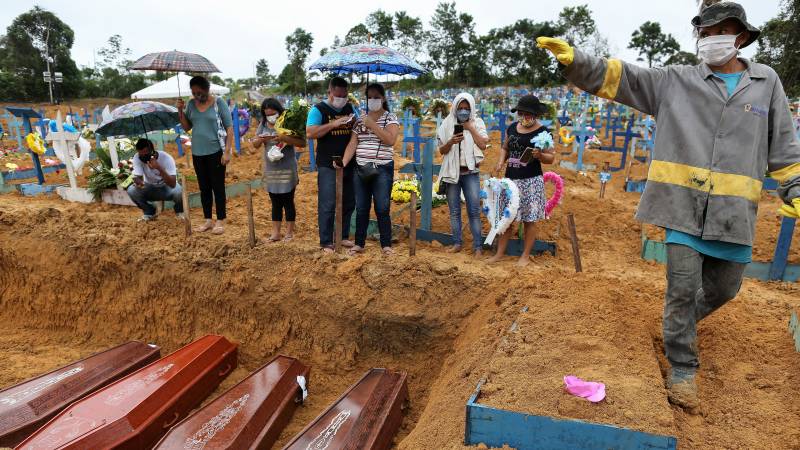In Brazil, coronavirus hits blacks harder than whites

Stay tuned with 24 News HD Android App

The coronavirus pandemic has a color in Brazil, the epicenter of the outbreak in Latin America: black Brazilians are exposed to greater risk than whites and are dying at a higher rate.
More than half Brazil's population of 210 million people is black, but they face deeply entrenched inequalities that are on full display during the pandemic. As in the United States, where black people are also bearing the brunt of COVID-19, there are a range of underlying reasons that Afro-Brazilians are being disproportionately affected.
From the quality of medical care they receive, to the level of exposure they face doing their jobs, to the death rate by race, blacks are worse-off than whites by a wide range of measures in a Brazil reeling from the virus. In Sao Paulo state, the hardest hit in the country, people of color are 62 percent more likely to die from the virus than whites.
The death rate from the virus for blacks in the state is 15.6 per 100,000. For whites, it is 9.6 per 100,000. White Brazilians hospitalized for the virus also have a better chance of making it out alive. Nationwide, 36.4 percent of patients hospitalized for severe acute respiratory syndrome are black, but they make up 45.3 percent of the deaths from the virus.
"Those numbers mean it's taking blacks longer to reach the hospital because they live farther away, or simply aren't receiving care when they arrive," said Emanuelle Goes, a researcher at public health institute Fiocruz. "The pandemic is deepening historical inequalities that have existed since slavery (abolished in 1888 in Brazil), at a time when policies to promote racial equality are all but dead."
'Essential' but underpaid
Black people in Brazil earn 55.8 percent as much money as whites on average, according to a report this week from the national statistics institute, IBGE.
"Black workers are more exposed to the virus. Many of them depend on the informal economy and have to go outside to make a living," said Aline Nascimento of the Brazil Identities Institute (ID_BR), a group that promotes equal access to employment opportunities for blacks. "Blacks also make up the large majority of employees who enable businesses deemed essential services to function, such as supermarket cashiers."
Furthermore, black people make up the vast majority of the population of Brazil's favelas, or slums, where crowded living conditions make social distancing more difficult. And they are more likely to suffer from other health conditions that put them at higher risk, including diabetes and high blood pressure.
"Sometimes they have those conditions and don't even know it, because they don't have access to routine medical check-ups," said Maria Ines da Silva Barbosa, a leading specialist on racial health inequalities in Brazil.
'Chaotic situation'
With more than 8,500 deaths so far, Brazil has been hit harder by the pandemic than any other country in Latin America. And experts warn the worst is yet to come. In Rio de Janeiro, the likelihood COVID-19 patients will survive depends on the neighborhood where they live.
The rate of death from a confirmed infection is 30.8 percent in the Mare, a tangle of favelas on the city's north side. It is 2.4 percent in Leblon, a chic beach neighborhood. "In the Mare, we have one public hospital and seven clinics for a population of more than 140,000 people. The situation was precarious before; now it's chaos," said Eliana Sousa Silva, head of the local rights group the Mare Network (Redes da Mare).
In the nearby favela of Jacarezinho, Dr Rita Borret said she has watched the situation get worse before her eyes. "At first, the early coronavirus cases (in Brazil) were rich people coming back from overseas, and people thought the pandemic wouldn't reach the favela. So everyone kept working, and the spread of the virus just accelerated," she said.
Now, residents are getting sick and dying, often in chilling circumstances, she said. "At first, when we called an ambulance, it would be here in half an hour. Now, it takes nearly five hours. And sometimes the patients get sent back home because there are no beds in intensive care."
